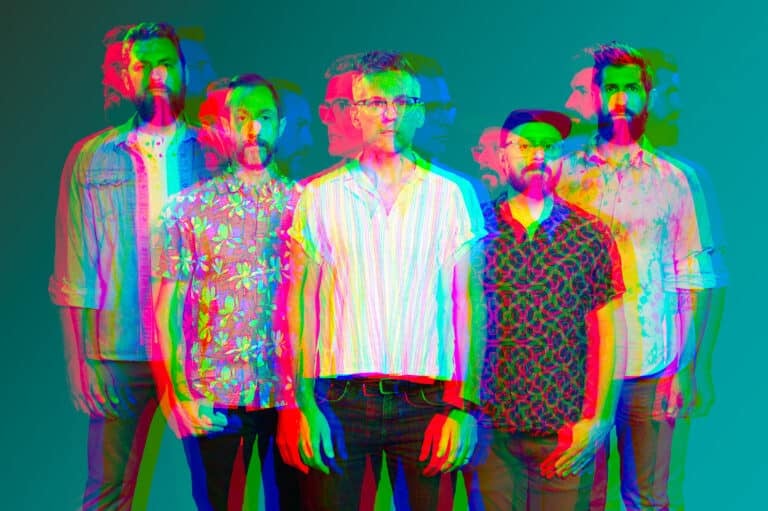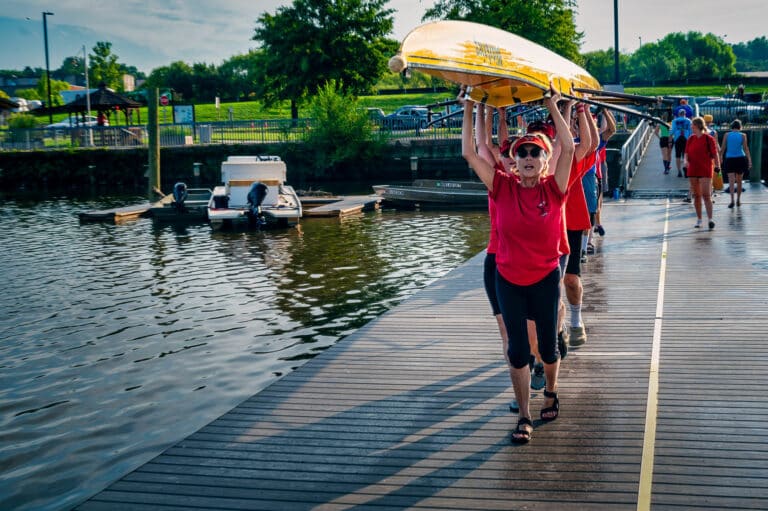THE FUTURE OF TRANSIT IN THE SOUTHEAST
he Southeast is sprawling faster than any region in the history of world civilization, but it also boasts the longest greenway systems, fastest trains, and biggest urban redevelopment projects in the nation. Now more than ever, the country is looking south to see what the future of transit will look like. Here’s a look at five alternative transportation projects in the region that could revolutionize the way America travels.

personal rapid transit
It sounds like something out of the Jetsons: Push a button and your very own transportation pod arrives to whisk you away to the destination of your choice. But that’s exactly what you will find in the middle of West Virginia. Personal Rapid Transit (PRT) was conceived by a West Virginia University engineer in the 60s, then built by the federal government as a demonstration project in the 70s to showcase potential transportation alternatives. It’s a computer-driven system of 73 cars operating on rails with five stations scattered throughout WVU’s campuses and downtown Morgantown. Students, faculty, and the general public can call for a car at one of the five stations, then dictate which of the other stations the car travels to. It’s been operating in Morgantown for 35 years and has successfully addressed that city’s unique transportation needs.
The nine-mile system cost $130 million to build in the 70s, and $3 million annually to operate today, but 14,500 rides are taken on the PRT every day, eliminating tens of thousands of car trips through Morgantown’s congested streets.
“It works well here, but plopping this system into just any city would require a lot of vehicles and rail miles,” says Hugh Keirig, WVU’s director of transportation, adding that the university is considering expanding the line at a cost of $5 million per mile. “It sounds great, but when you think in terms of cost, it might not be practical everywhere.”
Morgantown’s PRT is the only system of its kind open to the general public in the world. Similar systems are being considered for London’s Heathrow Airport, Arizona State University in Phoenix, and St. Tammany’s Parish in Louisiana.
high-speed passenger rail
Europe, Canada, Japan, and China have massive high-speed rail infrastructures, but the U.S. has just one line running from Boston to D.C., and it’s significantly slower than the 150-mile-per-hour trains in other parts of the world.
Earlier this year, Congress allocated $13 billion of stimulus funds to states for a network of 10 new high-speed rail lines between cities in the U.S.
One of the ten corridors given top priority by the Department of Transportation is the Southeast High Speed Rail Corridor, which will connect with the existing Northeast Corridor in D.C. and travel south through Richmond and Raleigh into Charlotte. Eventually, the line will travel through Atlanta and connect in Jacksonville with a Florida high-speed rail project already underway.
The route follows existing rail lines used for passenger and freight trains between Charlotte and D.C. It will reduce travel time from Charlotte to D.C. from 9 hours 20 minutes to 6 hours 20 minutes, with an average train speed of 85 mph, making the train competitive with drive time. It will offer eight round trips daily between Raleigh and Charlotte, with four going on to New York. Construction begins in 2013 and should be completed within three to five years.
return of the streetcar
In the 1960s, Washington D.C. was a city blessed with a 200-mile streetcar system. But then the city began removing the tracks to build a bus system.
“Looking back, giving up streetcars for buses was shortsighted,” says John Lisle, the communications officer for D.C.’s DOT.
D.C. is in the process of building two streetcar lines that eventually will have a fully functional streetcar system with 37 miles of track. Current streetcar systems in Portland, Seattle, and Tampa have spurred dramatic economic growth in the neighborhoods immediately surrounding the lines. In Portland, there has been $3.5 billion worth of investment in the neighborhoods within two blocks of the new streetcar lines.
“A streetcar line shows a permanent investment in the neighborhood on the part of the city,” Lisle says. “Those tracks are there to stay. Investors respond to that.”
According to the Lincoln Institute of Land Policy, 100 cities in the U.S. are currently pursuing streetcar lines, including Charlotte and Atlanta.
free buses for everyone
If you want more people to ride the bus, make bus rides free. That’s exactly what the city of Chapel Hill did in 2002, providing bus service to a 25-square mile area free of charge. It sounds expensive, but the city was only recovering 10 percent of its operating costs through the fare box; the rest was funded through taxes and subsidies. So it wasn’t a leap for Chapel Hill to cover the remaining 10 percent. Most cities are in a similar situation. On average, transit fares only cover 35 percent of operational costs.
As a result of free rides in Chapel Hill, the buses saw an increase of 5.4 million riders annually. Kevin Foy, Chapel Hill’s mayor, has said the city’s free public transportation system is “the foundation of the city’s sustainable future.”
Last year, Michael Bloomberg, mayor of New York, was asked what policy he would pass in his wildest dreams. Bloomberg said, “I would have mass transit be given away for nothing and charge an awful lot for bringing an automobile into the city.” Shortly after that statement, he proposed free crosstown buses.
Many cities are beginning to offer free buses on limited lines to help relieve congestion in key neighborhoods. Nashville recently began offering two free routes, one running east to west, the other north to south. Charlottesville also runs a free trolley between the University of Virginia’s campus and its downtown mall.

light rail
While high-speed rail typically is used in between cities, light rail is used within cities. It’s the fastest, most efficient—and also most expensive—form of transit, but the investment is already paying dividends in Charlotte. Critics thought the expensive light rail system was unnecessary and would be underused, but ridership on the train was twice as high as projected during its first year of operation in 2007. Surveys showed 72 percent of rail users didn’t use public transportation before the rail. Now the Lynx has 20,000 riders per day, and there’s only one 10-mile line. Charlotte has plans to build a comprehensive light rail system, starting with an 11-mile extension of the Blue Line.
Atlanta is planning an even larger light-rail system: the 22-mile Beltline will feature light rail, a parallel greenway, feeder trails, historic building preservation, 1,200 acres of added green space, and affordable housing developments. At an estimated $2.8 billion, it’s the biggest and most comprehensive urban redevelopment project underway in the United States.
“We have local funding sources in place through a tax allocation district, plus a private sector that’s contributed significantly, but transit needs federal funding,” says Howard Lilli, communications officer for the Atlanta Beltline Partnership.
 what about the bike?
what about the bike?
Super-fast trains and free buses are cool, but what about one of the most basic forms of alternative transportation we have at our disposal? Will the bike play a larger role in the future of transit?
The East Coast Greenway (ECG) is certainly the most ambitious bike-friendly plan in the country today. It’s a 3,000-mile trail on paved and crushed stone surfaces running from Key West, Fla., to Calais, Maine. Over 20 percent is already complete and on the ground, and another 20 percent is currently under construction. The ECG received the largest bicycle and pedestrian federal stimulus grant in 2010 when $16 million was awarded to connect the greenway through the city of Philadelphia. In our region, the Mount Vernon Trail (18 miles) is the longest contiguous stretch of the ECG. Two German cyclists are currently attempting to bike the entire 3,000-mile route, using roads to connect the existing greenway.
Meanwhile, Washington, D.C., is home to a fleet of Smartbikes, the first major automated public-use bike system in the U.S. For a $40 annual fee, residents get access to 120 bikes distributed at 10 rack locations spread across a five-mile radius downtown. Simply swipe your card, take a bike, pedal it to another location and check it back in. D.C. is also home to a state of the art BikeStation, a 1,600-square foot glass and steel bike garage with secure bike parking, a changing room with showers, lockers, bike repair, and rentals located at Union Station. •
PAY FOR PEDAL
It’s not just municipalities that are trying to encourage bike commuting. The League of American Bicyclists publishes a list of bike-friendly businesses that promote bike commuting amongst their employees. Here are five Southern businesses that the League singled out for actually making it pay to ride your bike to work.
The Hawley Company
Lexington, S.C.
This bike parts distribution company with 60 employees offers a bike-to-work rewards plan with points used toward parts purchase or paid time off. Workers can also earn money for a health savings account for individual use, based on the number of miles an employee commutes. Hawley also offers showers, lockers, and bike storage facilities.
Toole Design Group
Hyattsville, Md.
At this transportation design and planning firm, employees can earn gift cards for a dollar amount that coincides with the number of bike commutes taken. Toole also provides indoor bike parking, showers, maintenance supplies, and a bike repair station.
National Park Service, National Mall and Memorial Parks
Washington, D.C.
The National Mall and Memorial Parks unit of the NPS employs a full-time bike coordinator, and offers free bike safety and maintenance classes. The office features bike parking, showers, lockers, a bike repair station, and even a dedicated bike mechanic on staff. Employees can also check out a ride from the NPS’s fleet of free bikes to travel between memorial sites.
Liberty Bicycles
Asheville, N.C.
Bike shop employees are paid $1 for every direction they commute to work. Liberty also provides showers, locker rooms, laundry facilities, covered bike parking, and a bike wash.
212 Market Restaurant
Chattanooga, Tenn.
This upscale restaurant employing 40 people sponsors a local competitive bike team and offers a $20 bicycle commuter tax benefit each month. The restaurant also offers showers, lockers, and bike parking.







